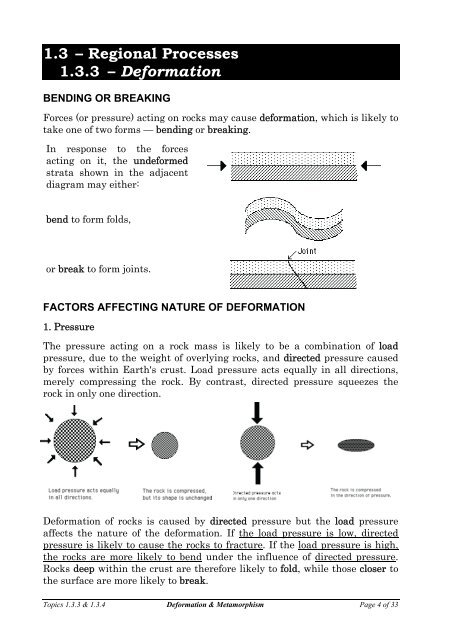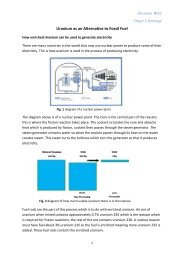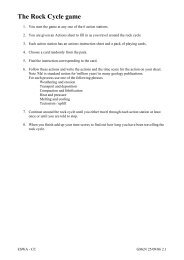Deformation and Metamorphism
Deformation and Metamorphism
Deformation and Metamorphism
Create successful ePaper yourself
Turn your PDF publications into a flip-book with our unique Google optimized e-Paper software.
1.3 – Regional Processes<br />
1.3.3 – <strong>Deformation</strong><br />
BENDING OR BREAKING<br />
Forces (or pressure) acting on rocks may cause deformation, which is likely to<br />
take one of two forms — bending or breaking.<br />
In response to the forces<br />
acting on it, the undeformed<br />
strata shown in the adjacent<br />
diagram may either:<br />
bend to form folds,<br />
or break to form joints.<br />
FACTORS AFFECTING NATURE OF DEFORMATION<br />
1. Pressure<br />
The pressure acting on a rock mass is likely to be a combination of load<br />
pressure, due to the weight of overlying rocks, <strong>and</strong> directed pressure caused<br />
by forces within Earth's crust. Load pressure acts equally in all directions,<br />
merely compressing the rock. By contrast, directed pressure squeezes the<br />
rock in only one direction.<br />
<strong>Deformation</strong> of rocks is caused by directed pressure but the load pressure<br />
affects the nature of the deformation. If the load pressure is low, directed<br />
pressure is likely to cause the rocks to fracture. If the load pressure is high,<br />
the rocks are more likely to bend under the influence of directed pressure.<br />
Rocks deep within the crust are therefore likely to fold, while those closer to<br />
the surface are more likely to break.<br />
Topics 1.3.3 & 1.3.4 <strong>Deformation</strong> & <strong>Metamorphism</strong> Page 4 of 33






